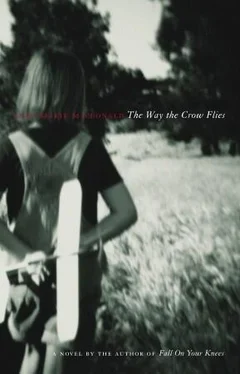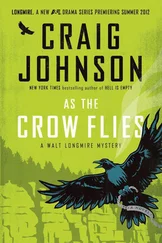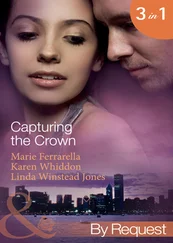
IN NOVEMBER OF 1963, Richard Froelich’s sentence was commuted from hanging to life imprisonment. He found out from the newspaper.
He was moved from the death cell to the Provincial Training School in Guelph. There were boys his own age, and sports. Two and a half years later, at the age of eighteen, he was transferred to the maximum-security prison in Kingston, where he was raped. He was then transferred to a medium-security facility on the outskirts of town, called Collins Bay Penitentiary — a grand Victorian pile in the neo-Gothic style, set amid the acres of a working farm.
Collins Bay Pen also comprises the farm annex, a minimum-security facility where inmates work in the fields and tend the animals. Escape would be easy, but is rare. If you are an inmate of the farm annex, chances are you will soon be paroled. In time, Rick was transferred there. Parole, however, was a thorny issue for the authorities, because Rick would not admit his guilt. How, then, could he be rehabilitated?
He raised rabbits and worked in the fields. His father was gone but the rest of his family visited as often as possible, although they were not permitted to bring his dog. He avoided close friendships within the prison because everyone always left eventually. The staff of guards, janitors, cooks, social workers and psychiatrists got on well with him. He was not raped at Collins Bay.
He had many sessions with many psychiatrists. In those days the concept of wrongful conviction had yet to gain currency. But there was psychology. And there was pharmacology. Some of Rick’s psychiatrists admitted that they could not tell whether he was guilty. His chief psychiatrist had come to like him, and to believe that Rick had repressed the memory of raping and killing the little girl. Like his colleagues, he pointed to Rick’s murky childhood — a defenceless Métis child, parents unknown, an institutional upbringing to the age of twelve, when he might have been subject to sexual interference at the hands of his keepers, finally adopted by an unconventional couple. Not surprising that, as an adolescent, Richard Froelich had experienced a psychotic break during which he attacked and killed the little girl. The consensus among the doctors was that the best they could do for the young man was help him remember his crime. And come to terms with it.
He was given truth serum — sodium pentothal, administered intravenously — and lysergic acid diethylamide, administered orally. LSD had been developed by the CIA via a course of illegal experiments, with the help of German scientists who had been imported in the post-war period. The fact that the drugs were still experimental was no impediment to Canadian prison authorities, who may or may not have known that their development had been funded by a foreign intelligence agency. This course of innovative drug therapy was part of an effort to help Richard Froelich recover his memory, thus allowing him to rehabilitate to the point where he could be safely released back into the community.
Eventually, Rick had difficulty remembering details of the days leading up to and following these drug treatments. And having recounted repeatedly the events of April 10, 1963, while under their influence, he found that aspects of that day which had always been stable in his mind, began to shift and disappear in patches, as though consumed by moths, and he became uncertain how to match up the tatters that remained.
He was diagnosed by a panel of psychiatrists as egocentric, grandiose, guarded, impersonal, defensive, narcissistic, schizoid and characterologically psychopathological.
A few years into his sentence, there was something called a “reference.” Queen Elizabeth II summoned Richard Plymouth Froelich to present arguments to the Supreme Court to assist them in deciding whether or not there was a legal basis on which to order a new trial.
This time, Ricky testified on his own behalf but showed no emotion. He impressed some as arrogant and overly controlled. A “chilling absence of affect” was noted. The panel of judges was not favourably impressed by his claim that he could remember little of what had happened on April 10, 1963, when he had left the PMQs at RCAF Centralia in the company of the nine-year-old victim.
The original evidence of the child witnesses was upheld. No new evidence was brought forward.
There had never been a subsequent similar murder in Huron County.
The court found insufficient grounds to order a new trial.
“Even a joke should have some meaning — and a child’s more important than a joke, I hope.”
Lewis Carroll, Through the Looking-Glass
MADELEINE REMOVES a flesh-coloured bathing cap from her head — it sports a glued-on grey comb-over and a permanent sprinkle of dandruff — and places it on a Styrofoam head that stands, impaled and impassive, on the makeup counter of her dressing room. She takes off a pair of thickly rimmed men’s glasses, lenses fogged with dulling spray, and adds them to the blank face. Loosens and removes a narrow black tie with a mysterious smudge — egg? — then sloughs off a vast grey suit jacket purchased at Mr. Big & Tall. She slips shirt and suspenders from her shoulders in one motion, and the trousers — sixty-five-inch waist — drop to the floor. She steps out of a pair of men’s size twelve brogues — brown, permanently dusty — then reaches behind to undo the snaps of her prosthetic torso. The opposite of a corset, it encases her in sculpted foam-core fat. Being constructed of a non-breathing synthetic, it’s hot, especially under television lights. Good night Maurice. She steps into the shower.
Madeleine is entering her prime — like the moment known to film people as magic hour, that fifteen or so minutes in which there is no sense yet of the approaching evening, even though the sun has breathed its first sigh of descent. No one has died of cancer yet. No one has given up. Early sorrows feel like ancient history, and current crises are manageable. Madeleine’s father has heart problems, but they are under control — it turns out he doesn’t need the bypass. There is AIDS, but that’s a terrible aberration, and even it seems to be a plague of the young. Most straight people still feel safe, and lesbians feel safest of all.
Madeleine stands under the shower, allowing her short hair to melt and her shoulders to drop. She starts to sing. Assisted by the burbling of water past her lips, she does Louis Armstrong, “what a wondahful woild….”
She was a tragedian between the ages of eleven and seventeen. It began at the Grand Theatre in Kingston, with an inspired Saturday-morning drama teacher called Aida. Aida was from the north of England — big-eyed, thin-lipped, with a raspy voice, a stricken expression and dyed red hair. She had been to RADA. She was Madeleine’s first grand passion after Miss Lang. It wasn’t a sexual attraction with Aida, however, but a passion of the soul. In Aida’s classes, Madeleine survived Auschwitz, a shoe her only companion; resisted cannibalism in a stalled elevator; decided who should live and who die in a rowboat adrift on the South Seas—“Wahtah wahtah everywheh, nor any drop to drink.” Aida didn’t reprimand her for using accents.
Madeleine lifts her face to the water. She always goes slow after a show, whether live or taped or somewhere in between. At all other times she is a moving target. It’s not possible to walk on water, but it’s possible to run. Just as it’s possible to dance on thin air. Keep talking and don’t look down. Move at the speed of thought, uncatchable as a wascally wabbit, swifter than a Road Runner, meep meep! She stands still, eyes closed, lips parted, allowing the water to love her.
Читать дальше













